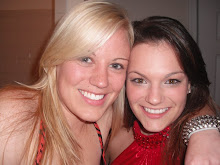
Walter Murch's description of the role of the editor in the film making process in his novel, In the Blink of an Eye, made me realize how trivial and somewhat annoying it must be. The most interesting depiction of an editor's job is when Murch explains, "the editor is actually making twenty-four decisions a second: 'No. No. No. No. No. No. No. No. No. No. Yes!'" (16).
I watched one of Walter Murch's films, The Talented Mr. Ripley to witness his technique, and I could not help myself, for the first 20 minutes of the film, to say "'No. No. No. No. No. No. No. No. No. No. Yes!" every second (which is actually kind of fun!) and see what it must be like to watch a movie not for enjoyment, but as work.. very detailed and meticulous work.
Murch also explains the importance, in his opinion, of what a movie should portray to the audience.
1. Emotion
2. Story
3. Rhythm (The 'right' moment)
4. Eye-trace (audience's personal focus)
5. Two-dimensional plane of screen (like a photograph)
6. Three-dimensional plane of screen (The character and their relation to the space in the shot)
Throughout the entire movie Murch's editing skills are clearly portrayed, yet one scene in-particular (one that I cannot stop thinking about) includes every aspect (emotion, story, rhythm, eye-trace, two-dimensional, three-dimensional) perfectly - the moments before, during, and after Ripley murders Dickie with an oar.
The two friends are on a small sailboat, in the middle of the ocean, and get into an emotional fight, which quickly turns from callous words to physical.
This picture is during their verbal altercation, and as you can see, Walter Murch makes the entire controversy feel very claustrophobic; I especially felt as though I could not breath in the two minute scene. Murch not only illustrates the emotion in this scene, but he purposely makes the entire altercation fit the entire screen, zooming in on the actors' extremely intense emotions.
Their verbal fight quickly turns to physical as Ripley hits Dickie in the face with an oar, and the audience, just like Ripley, is face to face with a bloody, terrifying Dickie, as you can see in the picture below.
Walter Murch brilliantly portrays the emotion of the characters in this film. You knew what each character thought, even if they did not say one word. Murch believes emotion is the number one most important part in editing the film, and because of it, The Talented Mr. Ripley is now in my 'must-see movie recommendation' list.
Sunday, January 23, 2011
"No. No. No. No. No. No. No. No. No. No. Yes!"
Posted by Kim Starr at 10:06 PM
Subscribe to:
Post Comments (Atom)

0 comments:
Post a Comment